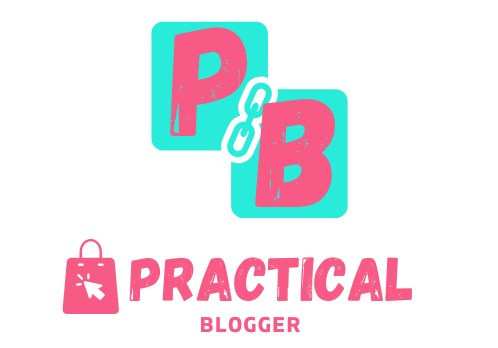Discover the world of ghost blogging, its significance in content marketing, and how to excel in this art. Dive into the strategies, tips, and tools to create compelling content that resonates with your audience.
- What is Ghost Blogging?
- Why Ghost Blogging Matters
- The Art of Ghost Blogging
- Ghost Blogging Best Practices
- Tools of the Trade
- Future of Ghost Blogging
- Ghost Blogging: Overview
- Frequently Asked Questions (FAQs) About Ghost Blogging
- Automate Marketing Campaigns & Scale Your Business with GoHighLevel! Click below to learn how.
- You might also like:
- Discover the Best-selling Books In Your Favorite Genre
- Sleep Soundly with Relaxium Natural Sleep Aid
In the digital age, where content reigns supreme, businesses and individuals are constantly striving to deliver high-quality, engaging material to capture the attention of their target audience. One of the most intriguing and impactful aspects of content creation is ghost blogging. In this comprehensive guide, we will demystify the concept of ghost blogging, explore its importance in content marketing, and equip you with the strategies, tips, and tools needed to excel in this fascinating craft.
What is Ghost Blogging?
Ghost Blog – Definition and Overview
Ghost blogging, often referred to as ghostwriting for blogs, is the practice of creating written content on behalf of someone else, typically under their name or brand. Ghost bloggers, also known as ghostwriters, are skilled writers who produce content that aligns with the client’s voice, style, and objectives. This content can include blog posts, articles, social media updates, and more.
Ghost blogging is a discreet and collaborative process where the ghostwriter works closely with the client to bring their ideas to life. The goal is to make it seem as though the content was authored by the client themselves, maintaining their unique tone and expertise.
The Role of Ghost Bloggers
Ghost bloggers play a crucial role in the world of content creation and marketing. They are hired for their writing prowess, research skills, and ability to adapt to different writing styles.
Here are some key roles and responsibilities of ghost bloggers:
- Content Creation: Ghost bloggers are responsible for producing high-quality, engaging, and informative content that resonates with the client’s target audience.
- Voice Mimicry: They must accurately mimic the client’s voice, tone, and style, ensuring that the content feels authentic and consistent with the client’s brand.
- Research: Ghost bloggers often conduct extensive research on the topics they write about to ensure accuracy and credibility.
- Confidentiality: They must maintain strict confidentiality, as they are often privy to sensitive information about the client’s business or personal life.
- Meeting Deadlines: Ghost bloggers are expected to deliver content within agreed-upon deadlines, keeping the client’s content calendar on track.
Why Ghost Blogging Matters
Enhancing Online Presence
In the digital age, having a strong online presence is essential for businesses and individuals alike. Ghost blogging enables clients to consistently produce valuable content for their websites and social media platforms. This, in turn, helps improve their search engine rankings, drives organic traffic, and positions them as experts in their respective fields.
When clients consistently publish high-quality blog posts and articles, they establish themselves as thought leaders in their industries. This not only boosts their credibility but also helps them connect with a broader audience.
Building Authority
Authority in a specific niche or industry is often built on the foundation of valuable content. Ghost bloggers play a significant role in crafting this content, allowing clients to showcase their knowledge and expertise.
By consistently delivering informative and engaging content, clients can attract a dedicated following of readers who trust their insights and opinions. Over time, this trust can translate into increased sales, partnerships, and opportunities within their field.
Time and Expertise
Many individuals and businesses simply do not have the time or writing expertise required to create compelling blog content consistently. Ghost blogging offers a solution by allowing clients to focus on their core responsibilities while leaving the content creation to skilled professionals.
Outsourcing content creation to ghost bloggers not only saves time but also ensures that the content meets high-quality standards. This combination of expertise and time savings can be a game-changer for busy professionals and businesses.
The Art of Ghost Blogging
Understanding Your Client’s Voice
One of the primary challenges of ghost blogging is capturing the client’s unique voice and style.
To do this effectively, it’s essential to:
- Study Existing Content: Review any existing content created by the client, such as previous blog posts, articles, or social media updates. This will give you valuable insights into their writing style.
- Interview the Client: Engage in in-depth discussions with the client to understand their preferences, values, and the tone they want to convey.
- Review Feedback: Pay attention to any feedback the client provides on your initial drafts. This iterative process helps fine-tune the content to match their voice.
Research and Preparation
Thorough research is the backbone of any successful ghost blog. To ensure your content is accurate and authoritative:
- Use Credible Sources: Rely on reputable sources for information and statistics. Ensure that any data you include is up to date.
- Understand the Audience: Get to know the target audience of your client. Tailor your content to address their needs, questions, and interests.
- Keyword Research: Conduct keyword research to identify relevant terms and phrases that can enhance the content’s SEO performance.
Crafting Engaging Content
Creating content that engages readers is a fundamental aspect of ghost blogging. Here are some tips to achieve this:
- Compelling Headlines: Craft attention-grabbing headlines that pique the reader’s curiosity and convey the content’s value.
- Clear Structure: Organize your content with a clear structure, including headings, subheadings, and bullet points, to make it easily digestible.
- Use Visuals: Incorporate images, infographics, and videos to enhance the visual appeal of your content.
- Storytelling: Weave storytelling elements into your writing to make the content relatable and memorable.
- Call to Action (CTA): Include a CTA at the end of each blog post, encouraging readers to take a specific action, such as subscribing to a newsletter or exploring related content.
Proofreading and Editing
Meticulous proofreading and editing are essential to ensure that your ghost blog is polished and error-free. Here’s how to go about it:
- Grammar and Spelling: Check for grammatical errors and spelling mistakes. Tools like Grammarly can be incredibly helpful.
- Consistency: Ensure consistency in formatting, tone, and style throughout the content.
- Fact-Checking: Verify the accuracy of any facts, figures, or statistics mentioned in the content.
- Read Aloud: Reading the content aloud can help you identify awkward phrasing or areas that need improvement.
Ghost Blogging Best Practices
Establish Clear Communication
Effective communication is key to successful ghost blogging collaborations. Here are some best practices:
- Regular Updates: Keep the client informed about your progress, especially if you’re working on a series of blog posts or articles.
- Clarify Expectations: Clearly outline the scope of work, deadlines, and any specific guidelines or preferences the client has.
- Feedback Loop: Encourage the client to provide feedback on your drafts and be open to revisions to align with their vision.
Maintain Confidentiality
Ghost bloggers often have access to sensitive information about their clients. It is paramount to maintain strict confidentiality and respect the client’s privacy.
- Non-Disclosure Agreement (NDA): Consider signing an NDA to formalize confidentiality agreements with your clients.
- Data Security: Ensure that you handle any client data securely, especially if it includes proprietary information.
Meeting Deadlines
Meeting deadlines is a non-negotiable aspect of ghost blogging. Clients rely on timely delivery to maintain their content calendars and engagement with their audience.
- Time Management: Prioritize tasks and manage your time effectively to meet deadlines consistently.
- Buffer Time: Build some buffer time into your schedule to accommodate unexpected delays or revisions.
Tools of the Trade
Content Management Systems (CMS)
Content Management Systems are essential for organizing and publishing blog content. Popular CMS options include WordPress, Drupal, and Joomla. These platforms provide user-friendly interfaces for creating, editing, and scheduling blog posts.
SEO Tools
To enhance the SEO performance of your ghost blogs, consider using SEO tools such as:
- Google Keyword Planner: For keyword research and analysis.
- Yoast SEO (for WordPress): A plugin that helps optimize your content for search engines.
- Ahrefs and SEMrush: Comprehensive SEO tools that provide insights into keywords, backlinks, and competitor analysis.
Editing and Collaboration Tools
Efficient collaboration is crucial in ghost blogging. Consider using the following tools:
- Grammarly: An AI-powered writing assistant that checks for grammar, spelling, and clarity.
- Google Docs: For real-time collaboration and easy sharing of drafts with clients.
- Trello or Asana: Project management tools to keep track of deadlines and tasks.
Future of Ghost Blogging
As the digital landscape continues to evolve, ghost blogging is likely to remain a valuable resource for businesses and individuals seeking to establish their online presence. With advancements in AI and automation, there may be innovations in content creation and editing tools, but the human touch in crafting engaging content is unlikely to be replaced entirely.
In the future, ghost bloggers may need to adapt to new content formats, platforms, and emerging technologies to stay relevant. However, the core principles of understanding the client’s voice, conducting thorough research, and creating compelling content will remain at the heart of ghost blogging.
Ghost Blogging: Overview
Ghost blogging is a powerful and discreet art that empowers individuals and businesses to maintain a consistent and engaging online presence. By understanding the client’s voice, conducting thorough research, and adhering to best practices, ghost bloggers can create content that resonates with audiences and drives meaningful results.
As the digital landscape continues to evolve, the role of ghost bloggers is poised to grow in importance. By staying adaptable and embracing new technologies and trends, ghost bloggers can continue to excel in the ever-changing world of content creation.
If you’re ready to elevate your online presence through the art of ghost blogging, consider enlisting the help of experienced ghost bloggers or exploring the tools and resources mentioned in this guide. Unlock the potential of your content and connect with your audience in a way that leaves a lasting impression.
Ready to harness the power of ghost blogging for your brand or business? Contact our team of expert ghost bloggers today to kickstart your journey toward captivating and influential content. Reach out to us now to discuss your content needs and get started!
Frequently Asked Questions (FAQs) About Ghost Blogging
The primary purpose of ghost blogging is to create high-quality, engaging content on behalf of someone else, often under their name or brand. This content is used to enhance their online presence, establish authority in their industry, and connect with their target audience.
Businesses and individuals choose to use ghost bloggers for several reasons:
1.) Time constraints: They may lack the time to consistently produce content.
2.) Writing expertise: Ghost bloggers are skilled writers who can create polished content.
3.) Maintaining a consistent voice: Ghost bloggers can mimic the client’s voice and style effectively.
Finding a reliable ghost blogger involves:
1.) Research: Look for experienced writers with a portfolio of relevant work.
2.) Recommendations: Seek referrals from trusted sources or previous clients.
3.) Interviews: Conduct interviews to assess their understanding of your needs and their writing capabilities.
Ghost bloggers capture the client’s voice and style through:
1.) Reviewing existing content authored by the client.
2.) Conducting in-depth interviews to understand preferences and values.
3.) Iterative feedback and revisions based on client input.
Ethical considerations in ghost blogging are essential. It is ethical as long as the ghost blogger maintains confidentiality, respects the client’s voice, and does not engage in any deceptive practices. Transparency between the client and the ghost blogger is crucial.
Ghost bloggers can create a wide range of content, including:
1.) Blog posts
2.) Articles
3.) Social media updates
4.) Whitepapers
5.) eBooks
6.) Reports
7.) Website content
To ensure confidentiality, consider:
– Signing a Non-Disclosure Agreement (NDA) with the ghost blogger.
– Limiting access to sensitive information.
– Choosing a reputable and trustworthy ghost blogger with a history of confidentiality.
You can assess the quality of a ghost blogger’s work by:
1.) Reviewing their portfolio of previous projects.
2.) Requesting sample content or a test assignment.
3.) Checking for grammar, spelling, and readability in their writing.
Ghost bloggers often employ SEO strategies such as:
1.) Keyword research and optimization.
2.) Using meta descriptions and alt tags.
3.) Incorporating internal and external links.
4.) Crafting engaging and informative content that encourages longer time spent on pages.
Effective collaboration with a ghost blogger involves:
1.) Clear communication about expectations, guidelines, and deadlines.
2.) Providing constructive feedback on drafts.
3.) Maintaining an open line of communication throughout the project.
The future of ghost blogging is likely to involve adapting to new content formats, platforms, and emerging technologies. However, the core principles of understanding the client’s voice, conducting thorough research, and creating compelling content will remain crucial.
Getting started with ghost blogging involves:
1.) Identifying your content needs and goals.
2.) Researching and selecting a reliable ghost blogger or agency.
3.) Clearly communicate your expectations and project scope.
4.) Collaborating closely throughout the content creation process.
If you have more specific questions or need personalized guidance on ghost blogging, feel free to reach out to our team of experts. We’re here to help you leverage the power of ghost blogging for your unique needs and goals. Contact us today!
Mastering the Art of Auto Blogging: Your Ultimate Guide to Automating Content Creation
Ultimate Guide to Blogging: Tips, Strategies, and More
11 Proven Ways to Make Money Blogging in 2023: The Ultimate Guide
10 Ways to Earn Income Through Blogging (Even If You’re Just Starting Out)
Successful Blogger: How Blogging Drives Personal and Career Growth
Turning Passion into Profit: Blog Monetization Strategies for Success
10 Benefits of Blogging: Exploring How Individuals Thrive Through Expression
Ultimate Guide to Professional SEO Services: Boost Your Online Presence
Discover the Top Blogs to Read in 2023: Your Ultimate Guide to Quality Content
Unlock Your Blog’s Potential with Free Blogger Templates: Ultimate Guide
Ultimate Guide to SEO Keyword Analysis: Unleashing the Power of Effective Keyword Research
Mastering SEO Writing: Ultimate Guide to Effective Content Optimization
Ultimate Guide to Ghost Blogging: Unveiling the Art of Crafting Spectacular Content
Unmasking the Dark Side of SEO: Ultimate Guide to Black Hat SEO
Google Digital Marketing: A Comprehensive Guide for 2023 and Beyond
Crafting a Successful Lifestyle Blog: Your Guide to Building an Engaging Online Presence
Mastering Blog Design: Strategies for a Visually Stunning and User-Friendly Website
Mastering SEO Analysis: A Comprehensive Guide to Boost Your Online Visibility
You might also like:
- GoHighLevel Snapshots for Sale: A Buyer’s Guide
- How to Create Snapshots in GoHighLevel to Save Time and Streamline Your Workflow
- GoHighLevel Login Tips and Tricks: The Ultimate Guide
- How to Use GoHighLevel to Grow Your Business
- How to Become a GoHighLevel Top Affiliate and Earn Passive Income
- GoHighLevel Pricing Plans: A Comprehensive Guide
- GoHighLevel Support: Get Help 24/7
Unlocking the Potential: How to Quickly Make Money – Strategies, Tips, and Caveats
How to Quickly Make Money: 10 Proven Methods for Fast Cash
How to Make Passive Income: Ultimate Guide to Financial Freedom
How to Make Money on YouTube – Ultimate Guide!
Unlocking Financial Freedom: How to Make Money on the Side – Ultimate Guide
How to Make Money at Home: 15 Proven Strategies to Boost Your Income from the Comfort of Your Home
- Related Reading: Why Start a Blog: Purpose and Benefits
- Related Reading: How Blogging Can Help You Discover Your Passion and Life Purpose
- Related Reading: How to Find Motivation to Start a Blog
- Related Reading: Identifying Personal and Professional Goals for Your Blog

























